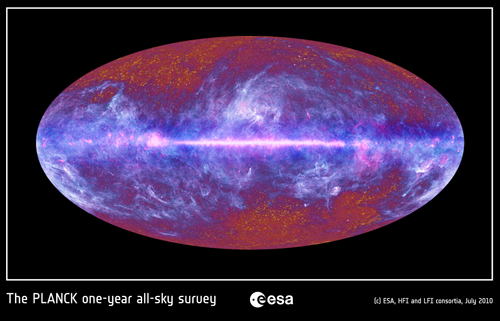The release of Planck’s first image of the whole sky has been voted the 7th best science story of 2010 by Discover Magazine. The magazine compiled a list of the best stories from the whole of science – from astronomy to biology, and from robotics to genetics.
In July, the first image of the whole sky from Planck was released, combining data from the first ten months of the mission. The image shows the cold dust and gas in the disc of our galaxy, shown in blue, pink and white – most apparent across the middle of the image. At the top and botom, the red and yellow mottled areas are the Cosmic Microwave Background, which is what Planck is primariliy designed to study. This shows the Universe as it was just a few hundred thousand years after the Big Bang – its infancy when compared to its current age of nearly 14 billion years.
Planck is observing the Cosmic Microwave Background in more detail over the whole sky than has been possible with previous experiments. Its sophisticated instruments and cooling system allow it to make measurements in nine different wavelength bands. This allows the Planck scientists to be able to separate the microwave light which originated in the early Universe from that from our own or other galaxies.
The image can also be viewed in Chromoscope.
